Learn how to make the perfect rib rub with this step-by-step guide. We'll show you the exact spice ratios, common mistakes to avoid, and pro tips for juicy, flavorful ribs every time. Follow this simple 5-step recipe to create a balanced, mouthwatering seasoning that works for any cooking method.
How to Build the Perfect Rib Rub
Creating your own rib rub is easier than you think — and infinitely customizable. Here's a simple framework to follow:
Basic 5-Step Rub Recipe:
- Base sweetness: 2–4 tablespoons brown sugar (adjust based on sweetness level desired).
- Smokiness: 1–2 tablespoons smoked paprika for a rich, deep flavor.
- Aromatics: 1 tsp garlic powder + 1 tsp onion powder for savory depth.
- Heat (optional): Pinch of cayenne or ½ tsp crushed red pepper flakes.
- Finishing touches: Salt and coarse black pepper to taste.
Mix everything in a bowl until well combined. Apply generously to both sides of the ribs and let them sit for at least 30 minutes before cooking. For extra flavor, refrigerate overnight.
Pro Tips for Rub Application:
- Remove the membrane on the back of baby backs for better absorption.
- Press the rub into the meat gently but firmly — don't just sprinkle it on.
- If using a dry brine method, add a bit more salt and less sugar.
Why Spices Matter for Ribs
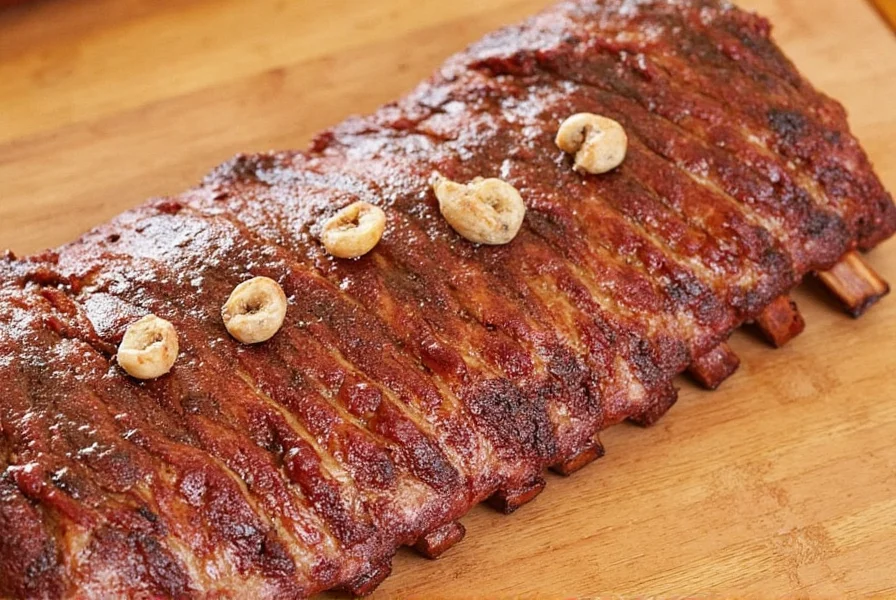
Ribs are all about texture and flavor. Unlike steaks or burgers, where marbling and juices play a starring role, ribs rely heavily on seasoning to deliver depth and complexity. A well-seasoned rack can elevate even the most basic cut into something extraordinary.
Here's why spices are so crucial:
- They balance the richness: Pork ribs are fatty and rich; the right blend of spices cuts through that heaviness without overpowering the meat.
- They create crust (bark): Especially when smoking, a quality rub helps form that desirable bark — the smoky, caramelized exterior that adds texture and flavor.
- They enhance moisture retention: Some spices like paprika and brown sugar help retain moisture, keeping the meat juicy during long cooks.
Spice Profiles That Complement Ribs
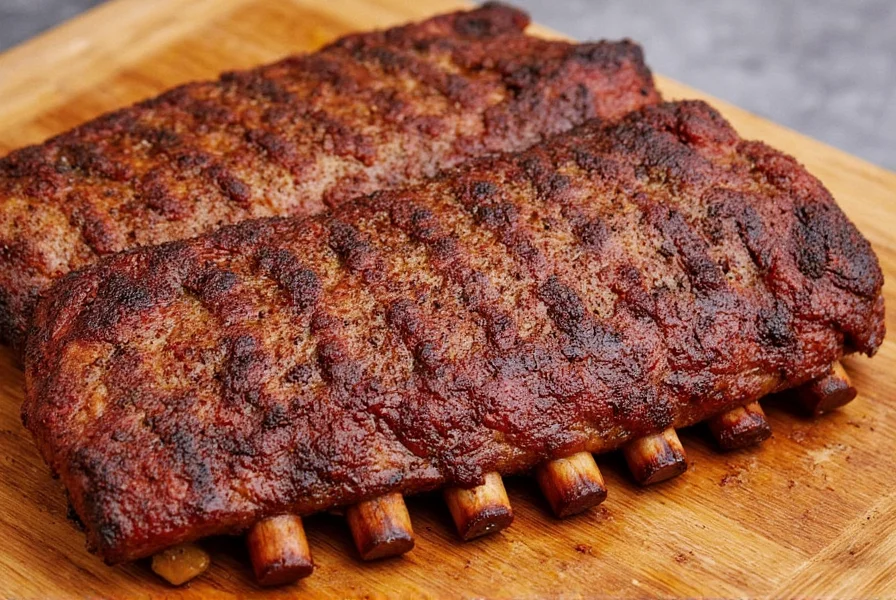
| Flavor Profile | Key Ingredients | Ideal For |
|---|---|---|
| Classic BBQ | Brown sugar, smoked paprika, garlic powder, onion powder, chili powder | Low-and-slow smoked ribs |
| Sweet & Sticky | Brown sugar, cinnamon, clove, allspice | Saucy baby back ribs |
| Spicy Kick | Cayenne, crushed red pepper, chipotle, black pepper | Grilled ribs or spicy sauces |
| Smoky & Savory | Smoked paprika, cumin, coriander, salt, pepper | Pork spare ribs or beef short ribs |
| Tangy & Fresh | Lemon zest, dried thyme, oregano, sea salt | Caribbean-style or goat ribs |
Each of these profiles works best with specific types of ribs and cooking methods. Experiment with different combinations to find what suits your taste buds and your smoker's personality!
Common Mistakes to Avoid When Seasoning Ribs
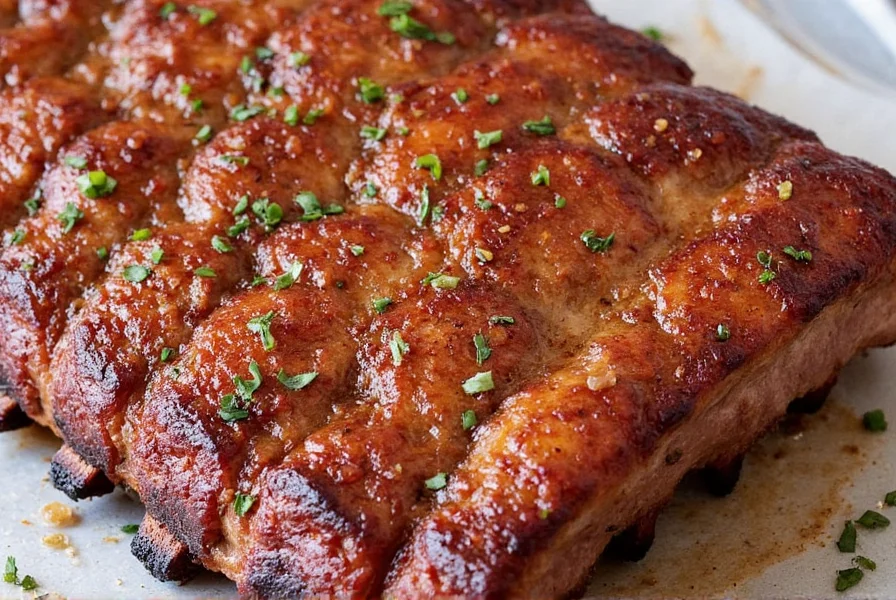
Even seasoned grillers make some rookie errors when it comes to spicing ribs. Don't fall into these traps:
- Mistake #1: Using too little or too much salt — Salt enhances flavor, but too much dries out the meat. Stick to 1 teaspoon per pound as a general rule.
- Mistake #2: Skipping the sugar — Brown sugar isn't just for sweetness. It plays a key role in developing color and bark formation.
- Mistake #3: Applying the rub too late — Give the meat time to absorb the flavors. At least 30 minutes is ideal; an hour or two is even better.
- Mistake #4: Overloading on spices — A heavy hand can overpower the natural flavor of the meat. Less is often more.
- Mistake #5: Not adjusting for regional styles — Kansas City loves sweet, St. Louis prefers balanced, and Texas leans toward bold and spicy. Learn local styles to impress friends or compete at barbecues!
Top 5 Tools Every Rib Enthusiast Needs
You don't need a ton of gadgets, but a few essential tools will make your rib-cooking experience smoother and more flavorful:
- Spice Shaker Set: Look for one with multiple compartments and adjustable holes for precise dispensing.
- Wireless Meat Thermometer: Essential for hitting the perfect doneness without overcooking.
- Cast Iron Rub Grinder: Ideal for making fresh rubs from whole spices.
- Quality Brush Set: Use a stiff-bristle brush for applying rubs evenly and cleaning grates.
- Vacuum Sealer: Great for pre-seasoning and storing rib racks in advance.
Buying Guide: Spice Essentials for Ribs
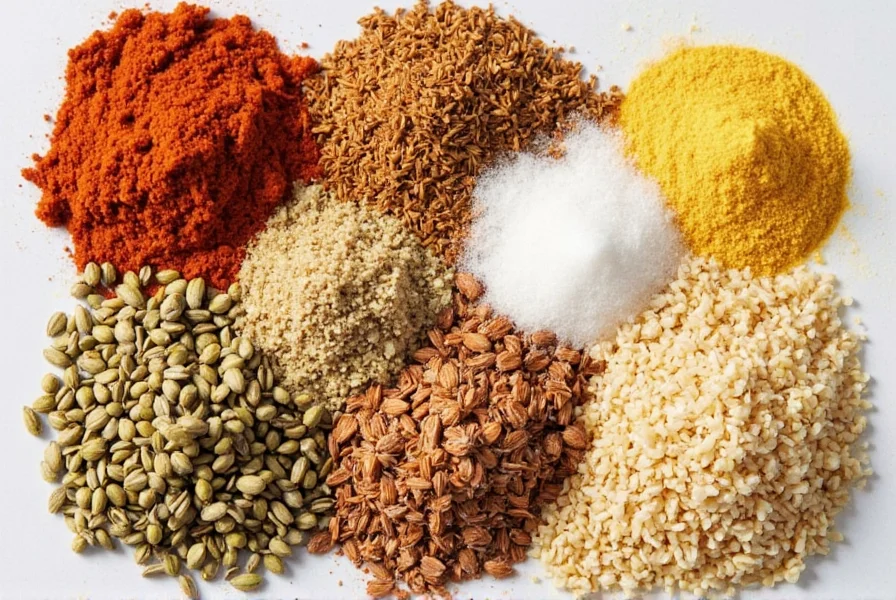
If you're new to the world of ribs or want to upgrade your pantry, here's a curated list of must-have spices and tools — including their features, advantages, and who they're best for:
| Product | Features | Advantages | Best For | Occasion |
|---|---|---|---|---|
| McCormick Smoked Paprika | Natural smoke aroma, vibrant color, fine grind | Adds deep smoky flavor without overpowering | Beginners and home cooks | Weekend grilling, weekday dinners |
| Badia Organic Garlic Powder | Non-GMO, finely ground, strong aroma | Enhances savoriness without grittiness | Anyone making homemade rubs | Cookouts, meal prep |
| Simply Organic Cumin Ground | Organic certified, earthy aroma, rich flavor | Perfect for Southwestern or Mexican-style ribs | Foodies experimenting with global flavors | Themed parties, fusion recipes |
| Starwest Botanicals Cayenne Pepper | High heat level, organic, consistent grind | Adds fiery kick without bitterness | Spice lovers and competition cooks | Competitions, spice challenges |
| OXO Good Grips Spice Shaker Set | Durable, ergonomic, multi-hole sizes | Easy to use and clean, versatile | Home chefs and beginners | Kitchen upgrades, gift giving |
Frequently Asked Questions About Rib Seasoning
How much rub should I use per rack of ribs?
A good rule of thumb is to use about 1/4 to 1/3 cup of rub per full rack of ribs. You want to generously coat both sides without creating thick clumps. The rub should form a thin, even layer that you can still see the meat texture through.
Should I remove the membrane before seasoning?
Yes, removing the silver skin membrane from the bone side of baby back and spare ribs is highly recommended. This thin membrane prevents rub penetration and can become tough during cooking. Use a butter knife to lift an edge, then grab it with a paper towel and peel it off before applying your seasoning.
How long should I let the rub sit on ribs before cooking?
For best results, let the seasoned ribs sit for at least 30-60 minutes at room temperature before cooking. For even better flavor penetration, refrigerate them uncovered for 4-12 hours (or overnight). This dry brining technique allows the salt to work into the meat and enhances both flavor and texture.
Can I use fresh spices instead of dried for my rub?
While fresh herbs and spices have wonderful flavors, they don't work well in traditional dry rubs because they contain moisture that can create a paste rather than a dry coating. Stick with dried spices for rubs, but you can use fresh ingredients in marinades or finishing sauces. The drying process concentrates flavors in spices, making them ideal for rubs.
What's the difference between dry rubs and wet rubs for ribs?
Dry rubs consist solely of dried spices and seasonings applied directly to the meat. Wet rubs (sometimes called "mops" or "pastas") include liquid ingredients like oil, mustard, or vinegar to create a paste. Dry rubs are better for developing bark during smoking, while wet rubs can help spices adhere better and add moisture. Many pitmasters use a combination - a dry rub with just enough oil or mustard to help it stick.
Can I use the same rub for pork and beef ribs?
You can use the same base rub, but you may want to make slight adjustments. Pork ribs generally pair well with sweeter, fruitier rubs, while beef ribs can handle bolder, spicier blends. If using the same rub for both, consider making two batches - one with slightly more sugar for pork, and one with extra pepper and cumin for beef.
Conclusion: Season Like a Champion
Mastering the spice basics for ribs isn't rocket science — it's more like culinary chemistry with a dash of creativity. Whether you stick to classic blends or venture into exotic flavor territories, the secret lies in balancing flavors, respecting the meat, and having fun along the way.
So next time you fire up the smoker or slap those ribs on the grill, remember: a thoughtful rub can turn a humble rack into a flavor-packed masterpiece. Now go grab your favorite spices, mix up a batch of magic, and get ready to impress everyone at the table.

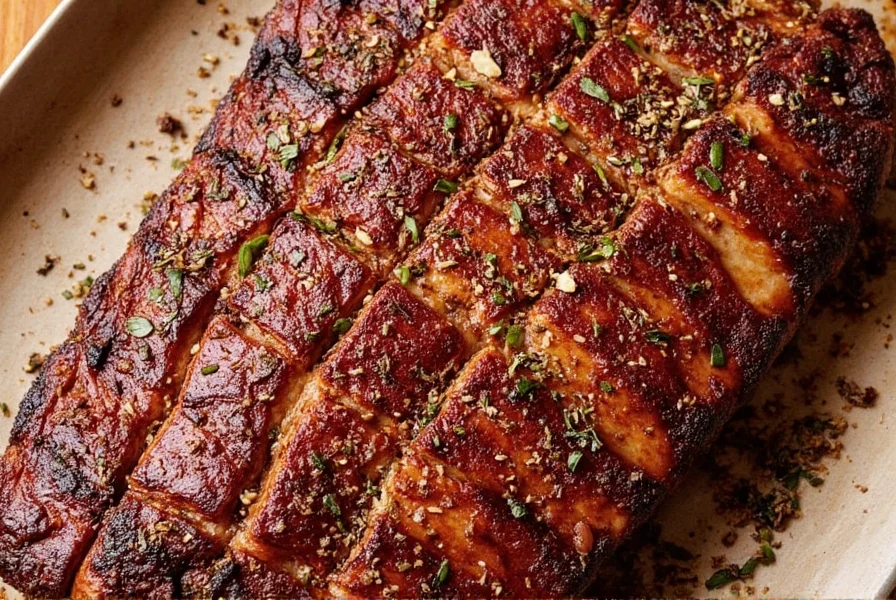









 浙公网安备
33010002000092号
浙公网安备
33010002000092号 浙B2-20120091-4
浙B2-20120091-4